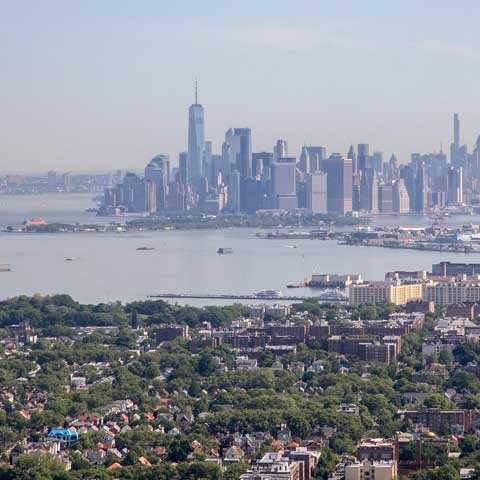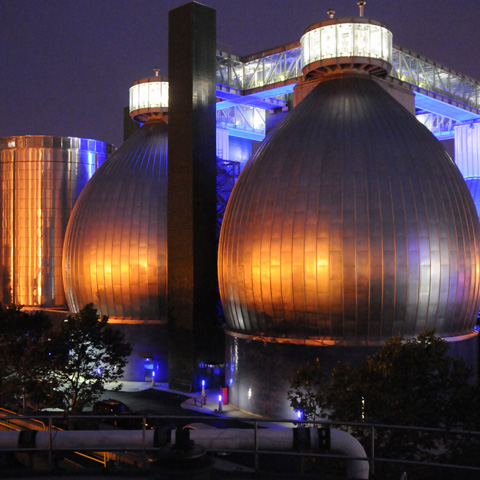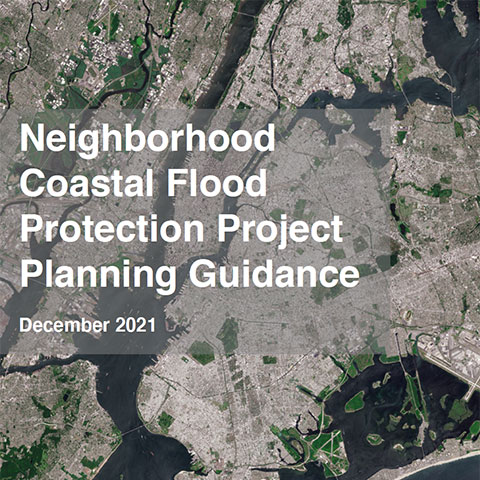
 Environmental Protection311
Environmental Protection311 Search all NYC.gov websites
Search all NYC.gov websites
Climate Resiliency
We’ve initiated several studies that examine the potential impact of climate change on our resource recovery facilities, pumping stations, and drainage areas to determine resiliency measures that will help prevent future disruptions.
NYC Stormwater Resiliency Plan
Extreme rainfall events are becoming more frequent and disruptive in New York City and beyond. Climate projections suggest that this trend will continue and that New York City will likely experience increased precipitation in the future. New York City’s Stormwater Resiliency Plan outlines goals and initiatives for the City to implement over a period of 10 years, including new policies for resilient stormwater management, the integration of future-looking climate change projections into our long-term drainage planning, changes to the City’s flash flood emergency response procedure, and an increased focus on public communications related to rainfall-based flooding. These efforts will help New Yorkers prepare for flooding events, and help the City plan for emergency response and long-term management.
- Download the Stormwater Resiliency Plan
- View the New York City Stormwater Flood Maps
Cloudburst Management
A “cloudburst” is a sudden, heavy downpour where a lot of rain falls in a short amount of time. Cloudbursts can cause flooding, damage property, disrupt critical infrastructure, and pollute New York’s rivers and Harbor. Cloudburst management implements a combination of methods that absorb, store, and transfer stormwater to minimize flooding from cloudburst events.
Visit Cloudburst Management to learn how the City is planning for neighborhoods that are vulnerable to flooding from heavy rain.
Water Utility Climate Alliance
We are a proud member of the Water Utility Climate Alliance (WUCA). WUCA is comprised of twelve of the nation’s largest water providers that supply drinking water to more than 50 million people throughout the U.S. Several member agencies also provide stormwater and wastewater services to the communities they serve. WUCA is dedicated to enhancing climate change research and improving water management decision-making to ensure that water utilities will be positioned to respond to climate change and protect our water supplies.
Water-Energy Nexus
Using 2005 data as a baseline, New York City has set the ambitious goal to reduce greenhouse gas (GHG) emissions 80% by the year 2050. Operation and maintenance of DEP’s water supply, stormwater, and wastewater management facilities currently account for 18% of total NYC government emissions. To reduce our carbon footprint, our sustainability teams have been proactive in tracking and identifying opportunities that offset GHG emissions and/or optimize indirect energy co-benefits.
View our Interactive Demand Management Map for a detailed view of completed water conservation projects across New York City.
Wastewater Resiliency Plan
Climate Risk Assessment and Adaptation Study
The NYC Wastewater Resiliency Plan is a comprehensive study that examined buildings and infrastructure at our 96 pumping stations and 14 wastewater resource recovery facilities, identifying and prioritizing infrastructure that is most at risk of flood damage. Through the study, we developed a set of recommended design standards and cost-effective protective measures tailored to each facility to improve resiliency in the face of future flood events. These standards and recommendations are currently being implemented.
Entire Report
Individual Chapters
Funding and Financing Shoreline Protection
Severe coastal storms pose a high risk and could impose meaningful costs to New York City.
Resource Recovery
DEP is advancing NYC’s circular economy by recovering energy and nutrients from organic waste.
New York City Panel on Climate Change
Providing the City with an authoritative source of actionable climate information.
Coastal Protection Guidance
Guidance for the planning and design of Neighborhood Coastal Flood Protection Projects






